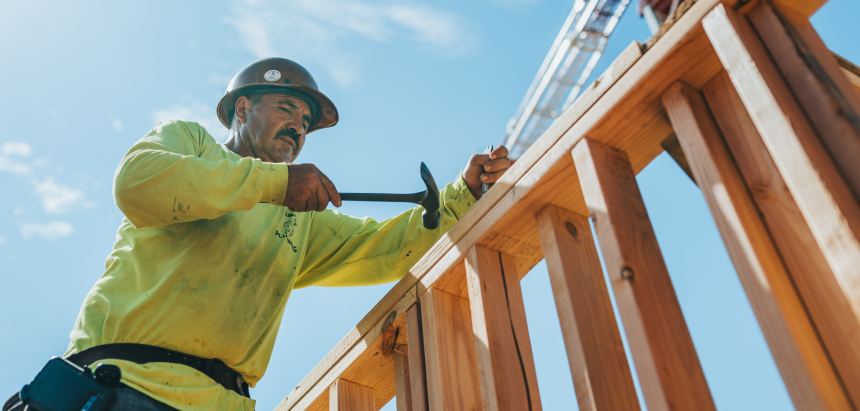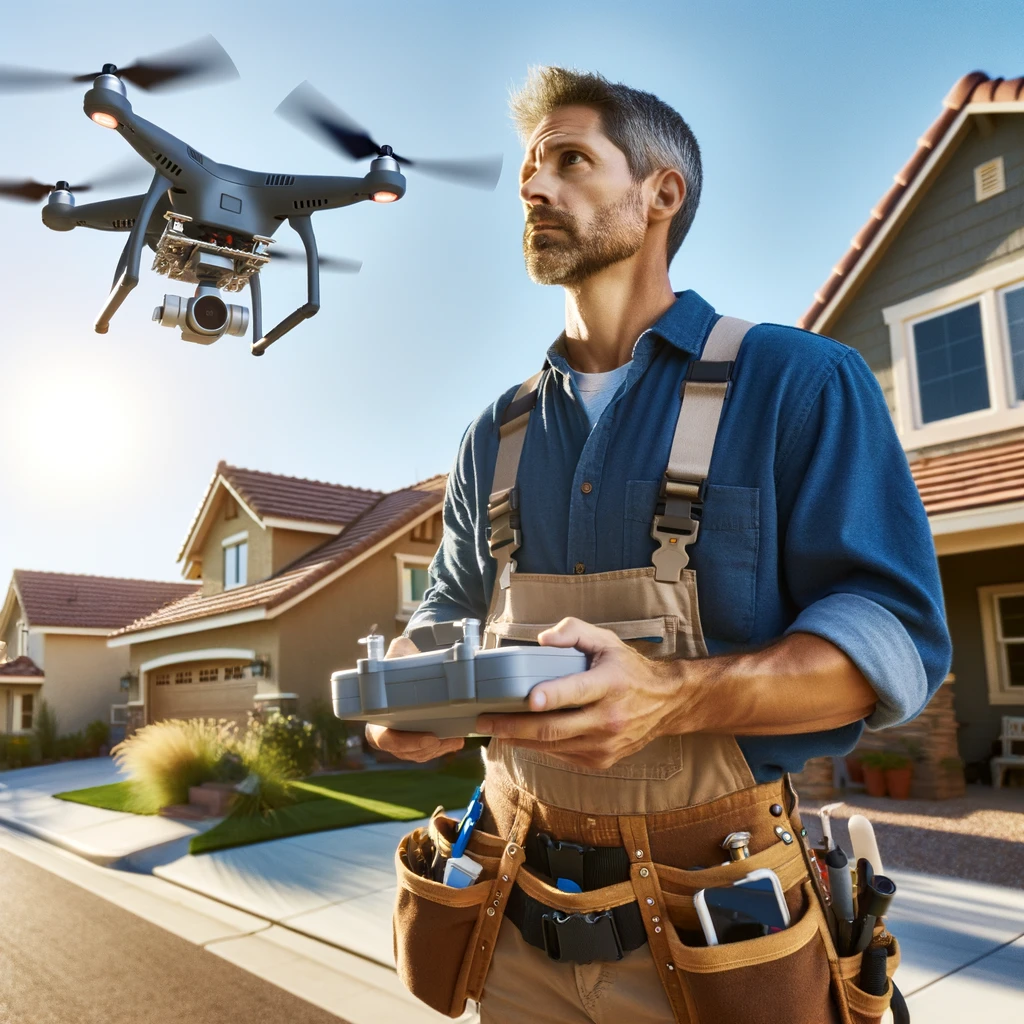Exactly when is the slow season for roofing? In areas that don’t have a white winter, this question could be a little harder to answer. For most of North America, the slow season for roofing is in the colder months. The busiest time for roofers everywhere falls between late Spring and mid-Fall when the temperatures are warmer with less precipitation.
If possible, preparation for the busy season should be done in advance to save you the added headaches when you and your team are trying to get work done. Below are a few handy tips to help you make the best of the upcoming roofing season. Read on to learn how you can make this season your best yet.

Tips to help create a busy roofing season
Post on your company’s Facebook page – Facebook is an important business tool, and neglecting it can make your followers wonder if your company is even in business anymore. Posting regularly keeps your business fresh in customers’ minds when they need roofing work done. Your posts don’t have to be specific to your company – you can post fun memes, inspiring images, or shared posts, as long as they’re related to roofing.
Make a marketing campaign – The pre-season is the ideal time to launch a marketing campaign to drum up business for the best roofing season. Through the use of targeted online and print advertising, you can create a strong community presence for your business.
Update your website – With Google averaging 40,000 searches per second, business owners would be foolish not to make the most of their company website. Ensure your contact details are up-to-date, and consider posting regular blogs to help keep the site current and high-ranking.
Remind your customers to have their roofs inspected – After the winter, a roof inspection lets your existing customers know if their roofs need repairing. Consider calling or emailing your existing customers to remind them to schedule a post-winter roof inspection.
Launch a preemptive strike – Many homeowners with aging roofs don’t know their roof might be getting ready to spring a leak. A little visual research within your community can help you identify potential customers. Then, create and deliver a project pitch that your future customers will remember.
Ask for reviews – If your business is a little lacking in the review department, try asking your existing customers to post reviews on Yelp, Google, and Facebook. They can even send you an email with a review that can be posted on your company website. Good reviews are your best business friend since customers often make their decisions based on them.
Spruce up your team – Fresh uniforms can get your season started off right. If your team uniforms are faded and full of holes, or they don’t exactly represent your company in the best possible way, consider getting new apparel or even re-designing it to stay current.
Inspect your fleet – The surest way to bring your season to a screeching halt is to have your vehicles break down. To prevent that from happening during the busiest roofing season, check the tire inflation, oil and fluid levels, and make sure your lights and indicators are working well. Consider having your vehicles professionally inspected to make extra sure they’re in top working condition.
Train for drone operation – Drones are useful for photographing teams at work and completed projects, as well as surveying your area for potential new customers. It’s a good idea to spend the pre-season time training your team members on how to use a drone.
Give back to the community – Giving back to the community establishes your company as a business that cares about the community it operates in. Some sports – like Little League baseball – start their season in March, which aligns nicely with the roofing season. By sponsoring a local sports team, you create a strong link between your company and your community.
Hire the right roofing team – Outdoor businesses naturally have an ebb-and-flow, with some adjusting their staffing levels at the close of the season. This can mean you have a core team that sticks with you season after season or new faces each time. Obviously, you want to make sure the work is done right, so be extra attentive when hiring so you end up with a good team.
Prepare your employees – It goes without saying that each new employee needs to be properly trained. You should also make sure all your employees’ training and certifications are current and that everybody is comfortable with the technology or apps your company uses.
Prepare your roofing equipment – If you keep any equipment in storage over the winter, it may be a good idea to haul it out and ensure it’s all in good condition before the busy season hits. Take this time to inventory your equipment and supplies to see what gaps need to be filled

Embracing roofing business technology
The roofing business is probably not the most obvious place to look for technology. Still, apps like iRoofing enable roofers to do many of the pre-installation tasks offsite – a particularly useful trait in a time when social distancing is still encouraged. iRoofing is an app created for roofers by roofers to improve presentation capability and boost sales. The iRoofing app is fully customizable, meaning you can input your company’s pricing to create more accurate project estimates for your potential customers.
Here are some of the benefits of iRoofing:
- Unlimited roof reports
- Dynamic presentations
- Ability to create roof simulations using an image of the customer’s home
- Ability to bid on jobs and close sales from afar
- Compatible with iPads, iPhones, and Android products
- No long-term contract
- Affordable monthly plans
- Usable on three devices, with the option to add more
- Special offers at startup
- Ability to create and sign contracts using the DocuSign plugin
- Ability to create presentations and streamline your business offsite
How iRoofing subscribers can prepare for the busy season
As an iRoofing subscriber, there are a few extra things you can do to prepare for the busy season. These things include:
- Update your app to the latest version of iRoofing – If you aren’t certain whether you have the most current version, head over to the App Store (for Apple devices) or Google Play (for Android devices) to check and/or install.
- Take a training refresher – iRoofing training is always free so that you can keep your user skills on point and maybe even learn how to use some of the app’s features you haven’t tried.
- Update the digital pitch book – iRoofing’s digital pitch book can be your best friend. Make sure to keep up-to-date with before-and-after photos from recent projects, customer testimonials, and all your manufacturer certifications. The digital pitch book keeps all that in one easy-to-use place.
- Prepare Estimator templates – Preparing Estimator templates in advance will not only help streamline your business but also boost your sales ability.
- Monitor your Clearoof™ credits – iRoofing provides a substantial allowance of Clearoof™ credits for free, and that allowance rolls over every month. Making sure your credit allowance can handle the busy season means you won’t run short. If you don’t think you will have enough, just contact us for more.

Making the most of the slow roofing season
As the busy season approaches, you may find yourself in a flurry trying to make sure everything is prepared so your team can hit the ground running. When there’s still a bit of the slow season left, there are things you can do to make the best use of the time available.
The slow season – while your company might still be working on roofing projects – is the prime time to sit back and look at the bigger picture by focusing on what’s needed to grow and organize your business.
Here are some ways you can make the best of your slow season:
- Review your business performance – During the busy season, you’re likely too involved with work in the field to think much about how the business is doing as a whole. During the slow season, take stock of your sales numbers, incomings versus outgoings, plans for the future, and maybe think up some new marketing strategies to implement closer to the start of the summer.
- Organize your business – Some might think organizing a business is about decluttering your office space, clearing out your filing cabinets, and clearing away old files on your computer. Organizing goes beyond that. Although there’s much to be said for physical organization, you should also organize the processes by which things are done in your business, whether it’s bookkeeping or project work.
- Streamline your approach – Like every field of work, the roofing business has a series of processes involved in getting a customer from the presentation and estimate stage to the happy conclusion of a project. Think about your last busy season. Did you notice any snags in the fieldwork? Was there a lack of communication somewhere? The slow season is the time to identify weaknesses and find ways to streamline your processes to ensure a better and more productive busy season.
Roofing Season FAQs
Technically, the start of the busy season for roofers depends entirely on where the business is located. Generally, the roofing season starts in spring. However, the actual start of the roofing season depends on when the last of the snow, ice, and freezing weather disappears. Roofers in Michigan will start their busy season a lot later than those in Florida.
Technically, the start of the busy season for roofers depends entirely on where the business is located. Generally, the roofing season starts in spring. However, the actual start of the roofing season depends on when the last of the snow, ice, and freezing weather disappears. Roofers in Michigan will start their busy season a lot later than those in Florida.
While many roofing companies have year-round services even in colder areas, there’s a definite end-of-season for asphalt roofing. Asphalt roofing requires mild temperatures since the shingles become brittle in freezing weather and may crack or break. Even asphalt shingles stored in a warm area before installation can still become compromised as soon as a roofing nail penetrates them.
Winter, especially in areas prone to snow and freezing, poses some obvious safety hazards for roofers. Freezing temperatures can result in equipment failure, also icing on the roof and ladders, and heavy winds.
The danger of summer may not be so obvious, but high heat poses an extreme risk of dehydration and heat stroke for roofers. Additionally, summer storms can loosen shingles, making slipping a significant risk. While the northern states and Canada may not experience the same summertime heat as the southern states do, there’s still a significant risk associated with high temperatures.
While the season technically starts in Spring and ends in Fall, for many areas the best roofing season is actually in mid-Fall, when the temperatures are cooler but not yet freezing.
The start of the roofing season is the start of a flurry of project work – or it can be if you take steps to prepare your business for the hopeful boost in sales. By following the tips listed above, and by laying down a little groundwork in the slow season, you can set your roofing business up for your best year yet.

















